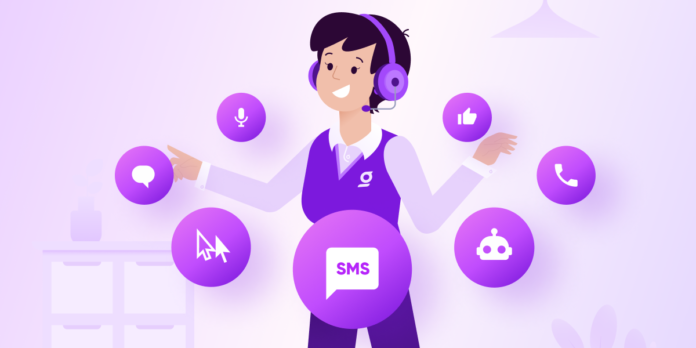Right Idea, Wrong Way to Get There
Can you remember the first time you heard the term “omnichannel?” Unless you’re new to the field, it was probably at least 5-10 years ago. Maybe more. But for contact centers, what does it mean, exactly?
In hundreds of interactions with service leaders and executives, I’ve asked rooms full of people to define the term–as they each understand it–and what I’ve learned is that there are lots of different interpretations. 3 of them are most predominant. These are all somewhat related, but there are also important distinctions:
- “Omnichannel is about every channel talking to every other channel.”
- “Omnichannel is about a customer being able to resolve any issue in any channel of their choice.”
- “Omnichannel is about having a 360-degree view of the customer.”
And of course, every one of these goals/aspirations sounds great. Always have. But here we are a decade or more down the road, and have you seen any of these 3 being achieved at its fullest at any company? Me, neither.
The Unfulfilled Promise of Omnichannel
Here’s a thought: Maybe the reason “the promise of omnichannel” has failed to come true, isn’t because technology has failed us, but because it was the wrong goal in the first place.
What companies need isn’t a way to check channels off a list because it’s the thing to do, or because competitors are adding channels, but rather, to seamlessly guide each customer to and between the best-fit communication modes for their specific issue at that moment.
Now that we (you, me, family/friends and the majority of your customers) have evolved to becoming digital-first people, we expect to be able to reach out and interact in whatever channel or medium we choose. But we don’t always choose what’s best for ourselves. For example, when a customer who is online ends up making a phone call to get something they could have easily gotten on the company’s website, that’s a waste of everyone’s time and patience. When a customer engages in a chat session about an issue that’s unlikely to be solved in chat, that’s a waste. And when customers email a company about some complex issue that will require multiple follow-up questions and additional diagnosis, well, that’s just sad.
Therefore, the optimal model for a service operation is one that enables customers to contact you any way they like (the vast majority coming through your digital properties) supported by on-screen guidance and automated business rules to customize the customer’s journey based on their digital footprint–both to create a better experience, and to make interactions more efficient.
Some issues are easily resolved in self-service, and a customer who is automatically guided to the right place on your digital properties will have a low-effort experience. Some issues are easily resolved in chat. If a site or app suggests “Hey, for your specific issue, we have people who can chat with you and completely resolve your issue,” most customers will gladly interact on their screens through chat. But in other situations–the “moments of truth” that define future loyalty–it is often a much better experience to speak with a live human, someone from your team.
The problem is, the only way most companies think they can achieve this is through an off-screen phone call that is completely disconnected from the customer’s online experience. That requires a complete channel switch–one of the leading causes of unnecessary effort among digital-first customers.
Preventing that from ever happening again is one of the key features of Digital Customer Service (DCS). With the right combination of automation, visual context and collaboration tools across channels, companies can create or even curate the exact right experience for the right customer, all based on what that person needs or requires at that time. Self-service? Virtual assistance? Live assistance? Any combination? If a transition is required, it occurs seamlessly. That is the definition of an effortless experience in a digital-first world.
Instead of the ever-elusive future goal of “omnichannel,” companies need to build their service model on a “ChannelLess®” platform. In other words, focus on the full customer engagement, not any specific channel. The customer’s issue (whatever they’re contacting you about right now) is more important than where they started their journey to resolve it. When you match the experience to each customers’ need in real time, and you have the context and tools to guide each unique individual to success, you have achieved the ultimate in personalization.
It’s not that “omnichannel” is impossible, it’s that even if it WAS possible, it was never the right solution to transform the customer experience for an on-screen world. A ChannelLess® platform is “What Omnichannel Was Meant to Be™”.





